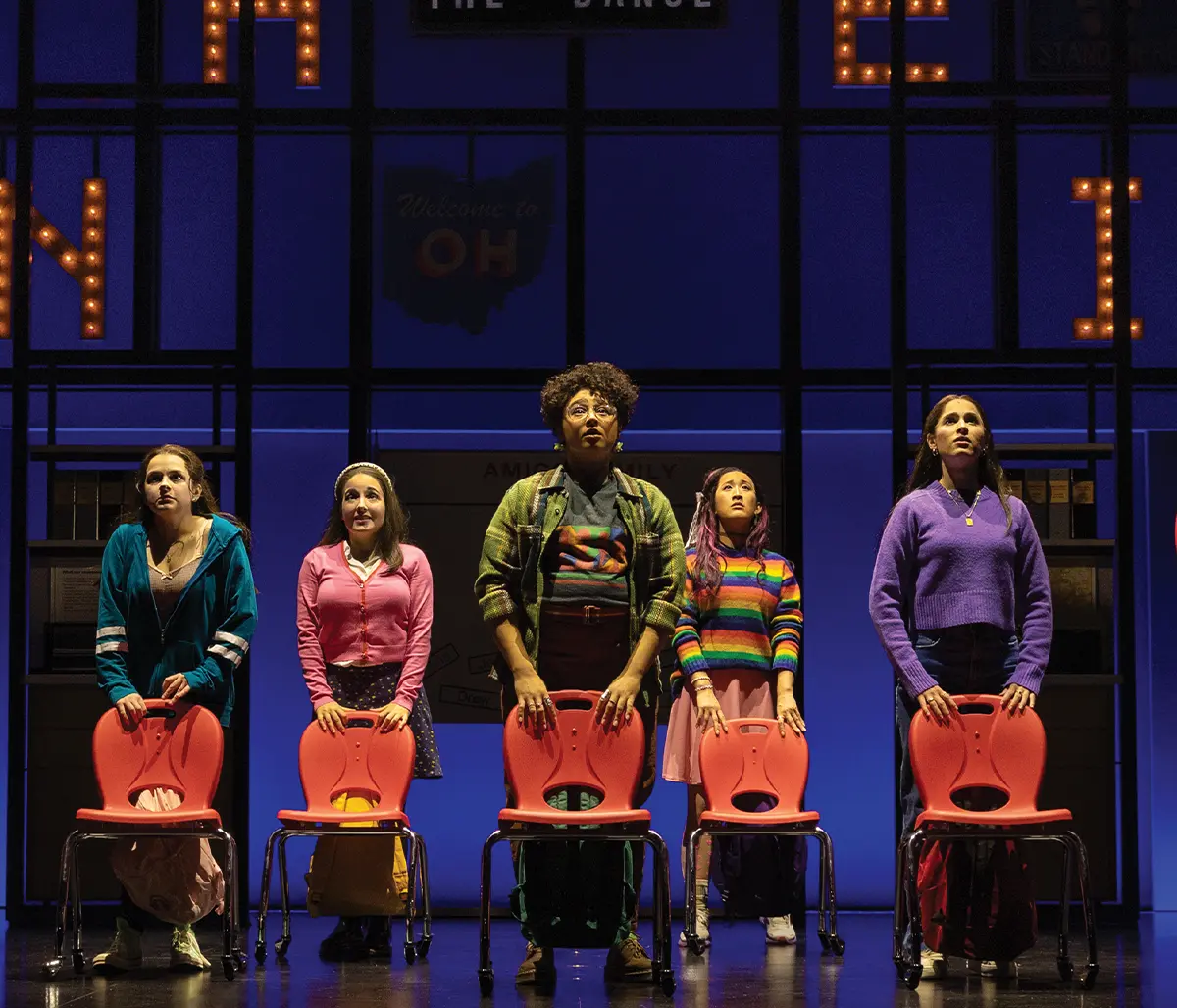
How to Dance on Broadway!
How a documentary about the social lives of young adults with autism by Alexandra Shiva ’95 became a Broadway musical
In her 2015 Peabody Award–winning documentary, How to Dance in Ohio, Alexandra Shiva ’95 introduced viewers to a group of teens participating in this ritual for the first time through the lens of an added challenge: a diagnosis of autism. Critically acclaimed for its sensitive treatment of her subjects and their interactions with Ohio-based psychologist Dr. Emilio Amigo, the documentary focused on a three-month period leading up to the dance in which the young people practiced social skills, including how to accept rejection.
Shiva recalls her excitement when famed director and producer Hal Prince approached her with the idea of transforming the material to a new medium: a musical. At the end of 2023, almost nine years after the film premiered, How to Dance in Ohio, the stage production, opened on Broadway for a limited run in December. With all of the autistic characters being played by actors with autism, the show is breaking new ground.
Among the ensemble cast of talented young actors—all of whom sing and dance—was Vassar alum Imani Russell ’18, who identifies as a Black+Boricua, queer, and disabled. Their character, Mel, based on a young person named Melissa, now Monte, offered audience members insight into the difficulty people with autism can encounter in the workplace.
“As a musical, the story is more fun,” Shiva said, “and more family-friendly. It speaks to a lot of the confusion kids have about growing up and fumbling through, and the mistakes you make as you get there.” The Broadway team’s commitment to making How to Dance in Ohio accessible for all audiences, including those with autism, was in evidence at every performance. There were special cooldown areas in the theater, as well as aids such as headsets, available to anyone who might have found the show overstimulating. Nevertheless, the show didn’t hold back, and the performances were as big, colorful, and energetic as any musical fan could hope for.

Samuel Stuart Photography / © Curtis Brown
While Prince did not see the musical come to fruition—he passed away in 2019—the creative team behind the show continued to consult with Shiva, who provided unused film footage that helped inform a number of scenes. Shiva also arranged an essential meeting with the clients at the Amigo Family Counseling Center; elements of that meeting and the conversations that followed are now a part of the show as well.
As with the making of the documentary, the young people whose stories serve as the basis for the production had questions—could they audition for a role in the show and how much of the material would be made up?—as well as a few concerns about representation. For example, would the characters have a stereotypical “autism voice,” one lacking in inflection, that some storytellers have used to signal autism?
Concerns also extended to the language. When Shiva began working on her film, her subjects preferred a person-first descriptor, i.e., “a young adult with autism.” The actors in the musical preferred identity-first language, i.e., “an autistic young adult.”
“It depends on who you’re talking to,” Shiva notes.
Those in the cast were also eager to see the stories of more of the group’s members included. The show’s focus subsequently expanded to include seven characters versus the three young women who were followed in the film. Partly fictional depictions of the emotional lives of family members and clinic staff are also added in the musical.
“Documentaries are their own art form with limitations that you just don’t have when you’re creating a narrative structure that allows you to expand and make changes,” Shiva said. “I think the [Broadway team] did an incredible job working with the source material, but also broadening the story.”
Shiva’s interest in creating her film was originally sparked by a close friendship with the parents of a teenager with autism and her curiosity about what services are available to families. “Understandably, there’s a lot of attention on young children with autism,” she explained, “but what happens when they get older? What kind of integration is out there? Is the world ready for them? And are they ready for the world?” A chance meeting with a client at the Center led her to Dr. Amigo, whom Shiva describes as “a great storyteller” and “a big personality” with a love of dance. When she learned he was planning a spring formal with his clients, Shiva immediately knew she had found her subject.
While the run on Broadway has ended, How to Dance in Ohio, the documentary, continues to reach viewers on HBO Max.
Shiva has gone on to complete a number of other projects since making the film, including This Is Home (2018), her documentary about Syrian refugees newly arrived in the U.S., and Each and Every Day (2021), which focuses on teenagers who have attempted suicide or have suicidal ideation. The latter project, which aired on MTV (and is available on demand), was filmed during the pandemic-related shutdown and much of the footage was completed remotely. While these constraints were not optimal, Shiva noted that “it works for the subject matter,” given the underlying theme of isolation experienced by the subjects.
She is currently completing another film for HBO that is scheduled to air this spring. In all of her work, Shiva says, “the throughline is to show the surprising connections, to show the shared humanity, instead of what makes us different.”